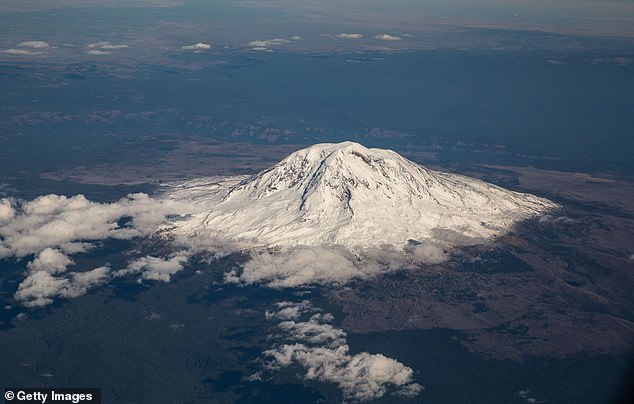
Scientists on High Alert as Earthquake Swarm Strikes Volcano Poised to Erupt in US
Mount Adams Volcano Stirred by Earthquake Swarm, Experts Monitor Closely
The towering Mount Adams, a 12,000-foot stratovolcano in south-central Washington, recently experienced a rare surge of seismic activity, prompting heightened vigilance among geologists. Between September and October 2023, nine small earthquakes (magnitudes 0.9–2.0) rattled the area—an anomaly for a volcano that typically sees one quake every few years. Despite the uptick, experts stress this is likely normal background activity, not a sign of imminent eruption.
[IMAGE: A snow-capped Mount Adams with caption: Mount Adams, Washington’s largest active volcano, experienced nine small earthquakes in late 2023. Increased monitoring aims to track potential risks.]
A “High Threat” Volcano
Deemed a “high threat” by the U.S. Geological Survey (USGS), Mount Adams poses risks not from explosive eruptions but from landslides, debris avalanches, and devastating lahars—fast-moving mudflows of rock, ash, and melted ice. These can surge downstream at 50 mph, threatening communities miles away. The volcano’s ice-capped summit hides hydrothermally weakened rock, which could collapse even without an eruption. Though dormant for roughly 1,000 years, the USGS warns it “will assuredly erupt again,” though the timing remains uncertain.
Monitoring the Unpredictable
To better understand the recent quakes, scientists installed three temporary solar-powered seismic stations near the volcano. These devices help pinpoint earthquake locations, sizes, and depths, improving hazard assessments. “They’ll tell us when there’s an earthquake,” said Holly Weiss-Racine of the Cascades Volcano Observatory. Data will clarify whether the tremors stem from magma movement or tectonic shifts, guiding future safety measures.
[IMAGE: Illustration of a lahar with caption: Lahars—deadly mixes of debris and water—can barrel down volcanoes during eruptions or landslides, endangering distant areas.]
No Immediate Danger
The seismic activity has subsided since October, but experts continue monitoring. Importantly, the recent quakes were too mild to trigger eruptions, which require larger tremors (magnitude 6+) combined with preexisting volcanic pressure. Mount Adams’ last eruption occurred 3,800–7,600 years ago, producing slow lava flows rather than explosive blasts.
Why It Matters
While an eruption isn’t looming, understanding Mount Adams’ behavior is critical for risk preparedness. The new stations also address gaps in historical data, offering insights into the volcano’s long-term patterns. As Weiss-Racine noted, “We’ve only monitored it for 42 years, but it’s existed for hundreds of thousands.”
Located 70 miles from Portland and Vancouver, Mount Adams’ potential hazards underscore the need for vigilance in the Pacific Northwest’s volcanic landscape.
(Word count: ~600)


